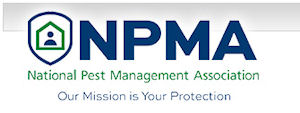 The following is a May 19 bulletin from the National Pest Management Association (NPMA’s) Policy Team. A PDF of the report can be downloaded here.
The following is a May 19 bulletin from the National Pest Management Association (NPMA’s) Policy Team. A PDF of the report can be downloaded here.
As anticipated, the White House Task Force released the Pollinator Plan, which was embargoed for distribution until early this morning. (WHAT FOLLOWS IS UPDATED INFO, POSTED 12:43 P.M. MAY 19):
Here are the five things that you need to know:
1.) The Overall Strategy is being led by USDA and EPA and includes:
- Pollinator research action plan
- Plans for expanding education and outreach
- Opportunities for public-private partnerships
- Improving pollinator habitat
The plan is heavily tilted toward increasing research on pollinator health and improving and expanding pollinator habitats. These two points are highlighted by the President’s 2016 budget request and the plan’s emphasis on collaboration with federal agencies, states and public-private partnerships.
2.) EPA Will Issue for Public Comment a Prohibition on Foliar Application During Contracted Pollinator Services by December 2015.
According to the strategy, EPA will propose to prohibit foliar applications of acutely toxic products during bloom when they are used at sites where bee colonies are present and under contract for pollinator services. The protective measures will include advisory hazard statements (e.g., pollinator protection boxes) as well as enforceable label language. For sites that do not have managed bees on premises and under contract, EPA believes that Managed Pollinator Protection Plans developed by individual states will effectively protect managed pollinators.
To further clarify, NPMA believes this is a key piece of the released strategy putting emphasis on the need to work with states in the development of pollinator protection plans. In preparation for this announcement, NPMA has developed Pollinator Best Management Practices in addition to a model state engagement strategy that can be used proactively when speaking with your state regulators.
3.) The Strategy Outlines three overarching Objectives/Benchmarks
- Reduce honey bee colony losses during winter to no more than 15% within 10 year
- Increase Eastern population of the monarch butterfly to 225 million butterflies
- Restore and enhance 7 million acres of land for pollinators over the next 5 years through Federal, State and public-private partnerships
4.) EPA is Developing a Comprehensive Approach to Assessing Pesticide Risks to Pollinators
New pesticide exposure and effect study protocols as well as additional chronic and acute toxicity screening will be included in this approach. The neonicotinoid family of pesticides will be revaluated in 2015-2017 according to a schedule laid out in the plan. Preliminary risk assessments for 58 active ingredients will be made available for comment in 2015. In addition to neonics, we have identified three other active ingredients used by PMPs including boric acid, imidacloprid and propoxur (though not all are used in outdoor settings with no potential impact on pollinators). This assessment is intended to help fill the data void referred to in the EPA’s letter to registrants last month regarding the interim position to place the registration of new neonicotinoid use patterns on hold. As it relates to Ag, EPA will continue to analyze the benefits of neonicotinoid seed treatments and encourage new technologies regarding seed delivery.
5.) EPA Will Work with States and Tribes to Issue Pollinator Protection Plans
Customized mitigation plans will be developed by states, focusing on communication between beekeepers and applicators to reduce the likelihood of exposure to pesticide applications. A number of states already have pollinator protection plans in place and may others are in the process of creating plans. Again, It is critical that the structural pest management industry be involved as stakeholders in the plan development process.
For resources, including state your state’s contact information visit NPMA’s industry page at www.pollinatorfacts.org
Conclusion:
Based on the information available at this time, the restrictions anticipated from EPA should not have an immediate direct impact on structural applications. Further federal action during the registration process and the creation and implantation of state pollinator action plans will continue to be a priority of NPMA and our membership. Policy Staff will remain actively engaged at the federal and state level to further support and protect the structural pest management industry and defend PMP product uses.
Leave A Comment